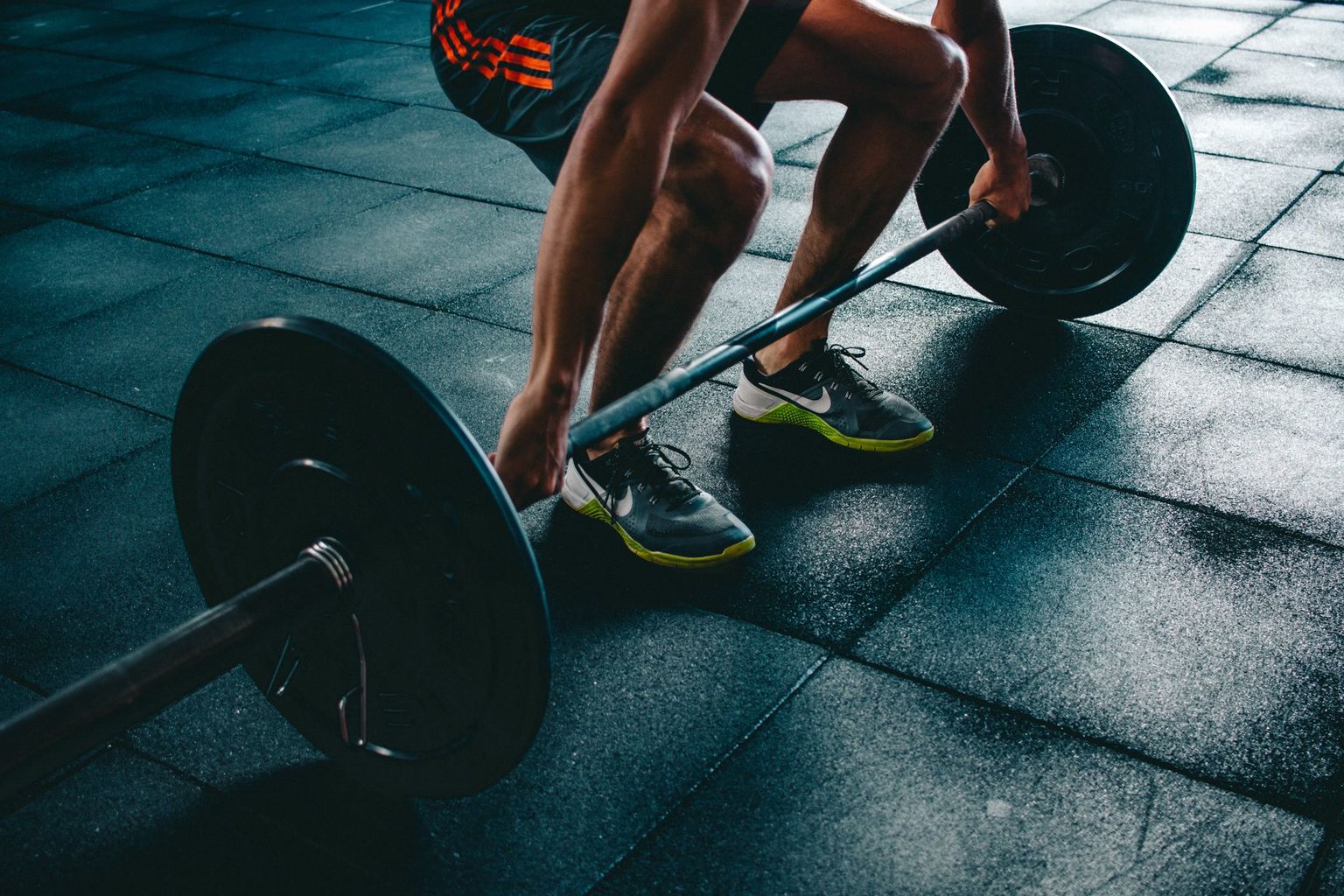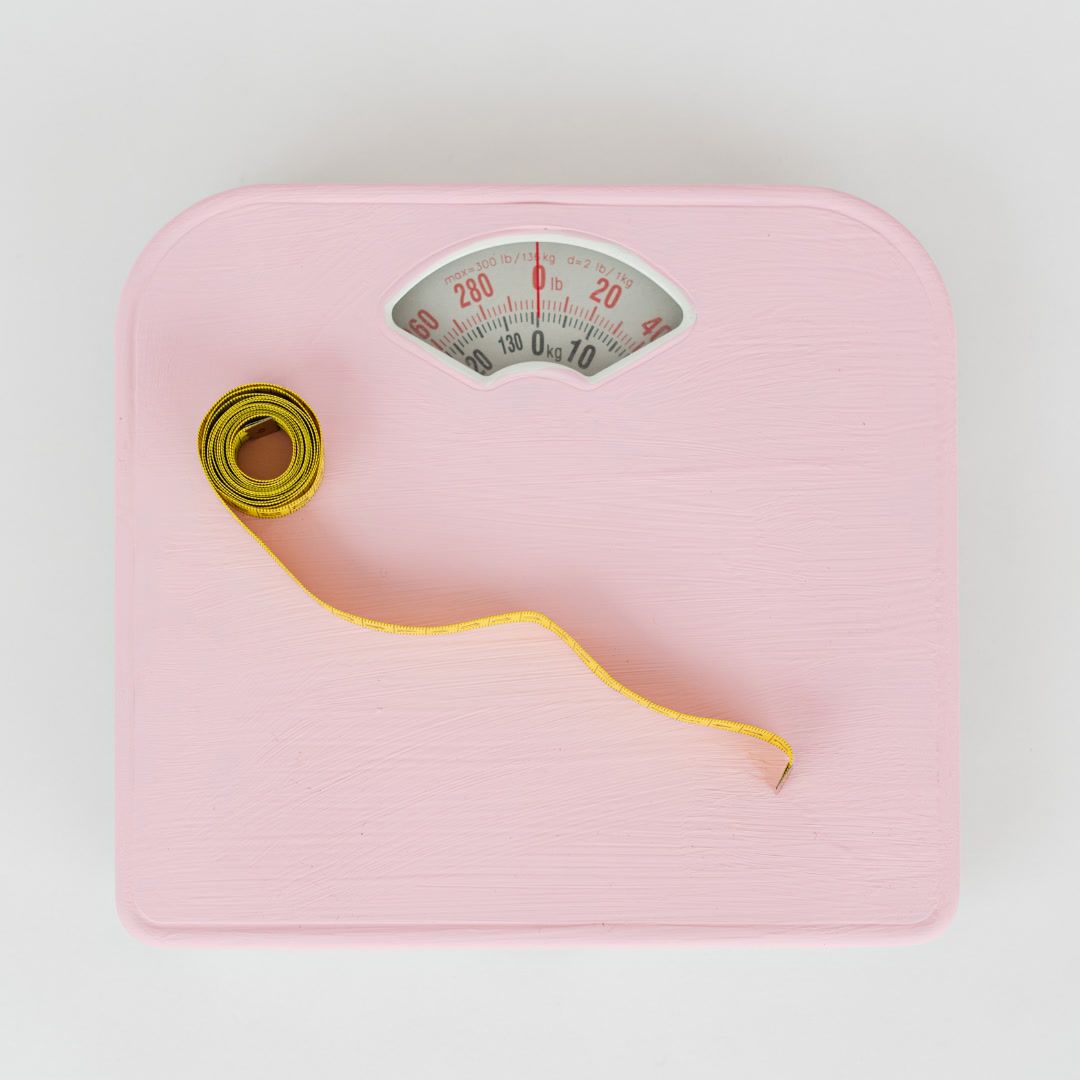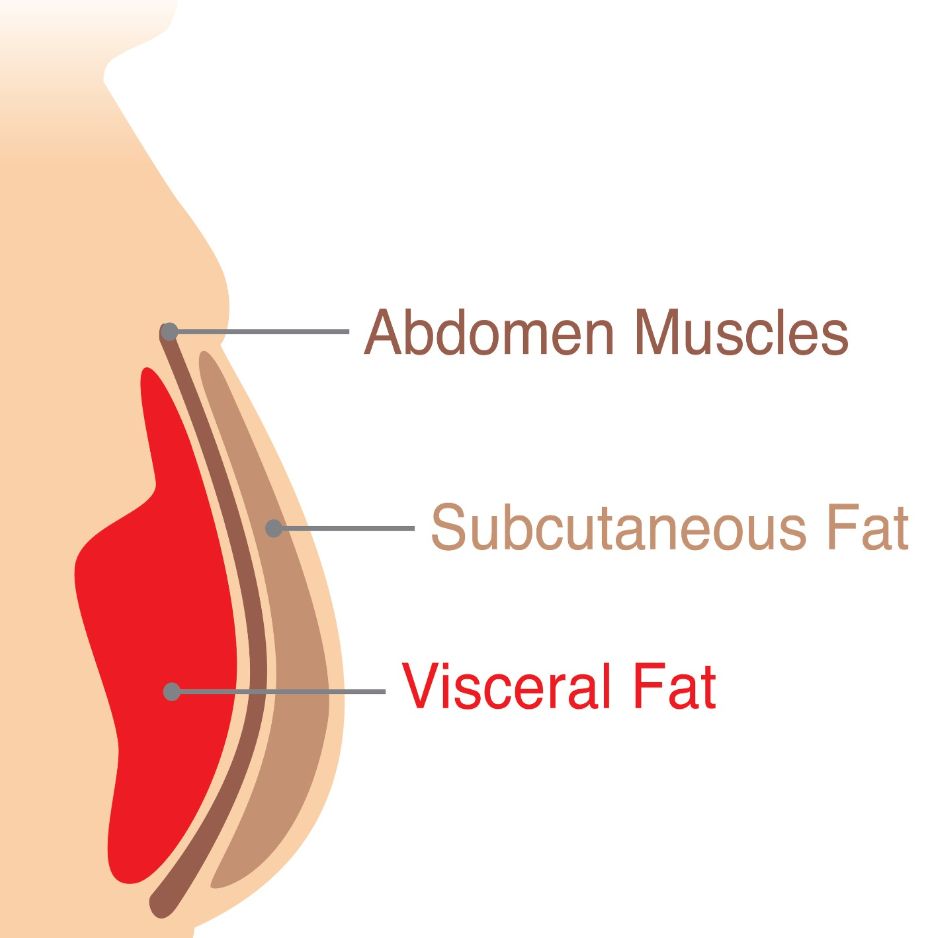How to Lose Chest Fat: A Step-by-Step Guide

How to Lose Chest Fat: A Step-by-Step Guide
Struggling with chest fat or "man boobs" that makes you avoid the beach or feel self-conscious in fitted shirts? You're not alone. Whether you're dealing with stubborn deposits that won't budge despite regular exercise, or you're unsure if what you're experiencing is fat or something else entirely, you've come to the right place. This comprehensive guide breaks down everything you need to know about how to lose chest fat effectively. We'll cover the proven combination of diet, exercise, and lifestyle changes that actually work.
The key to success lies in understanding what type of chest enlargement you're dealing with, then applying strategies backed by evidence. Let's dive into the most effective approaches.
Understanding Chest Fat: The Science Behind the Problem
Before jumping into solutions, it's crucial to understand what you're dealing with. Not all chest enlargement is the same, and the approach that works varies dramatically based on the underlying cause.
Chest Fat vs. Gynecomastia: Know the Difference
Chest fat (pseudogynecomastia) is soft, fatty tissue that accumulates in the chest area due to overall weight gain. It feels squishy when you pinch it and affects the entire chest region rather than being concentrated around the nipples.
True gynecomastia involves actual glandular breast tissue development due to hormonal imbalances. This tissue feels firmer, rubbery, and is often concentrated directly behind the nipple. It may be tender to touch and can occur even in relatively lean men.
Gynecomastia affects 30-60% of males at some point in their lives, particularly during puberty and later in life due to natural testosterone decline.
The Checklist: Identifying Your Chest Fat Type
This is a general guide for self-assessment and should not replace a professional medical evaluation.
You likely have chest fat (pseudogynecomastia) if:
- The tissue feels soft and fatty when pinched
- It's distributed across the entire chest area
- You've gained weight in other areas too
- The enlargement is symmetrical on both sides
- No tenderness or firm lumps behind the nipples
You may have gynecomastia if:
- You feel firm, rubbery tissue directly behind the nipple
- The area is tender or sensitive to touch
- There's noticeable asymmetry between sides
- The tissue doesn't reduce with weight loss
- You're taking medications that can affect hormones
When to see a doctor: If you notice firm lumps, significant asymmetry, nipple discharge, or the issue persists despite 6 months of consistent diet and exercise, consult a healthcare provider to rule out hormonal imbalances or other underlying conditions.
The Complete Chest Fat Loss Strategy
Foundation: Creating a Caloric Deficit
The fundamental rule of fat loss applies to chest fat: you must burn more calories than you consume. Creating a consistent, sustainable energy deficit is the key driver of fat loss. Individual metabolic responses can vary, but most people see steady progress with a daily deficit of 300-500 calories.
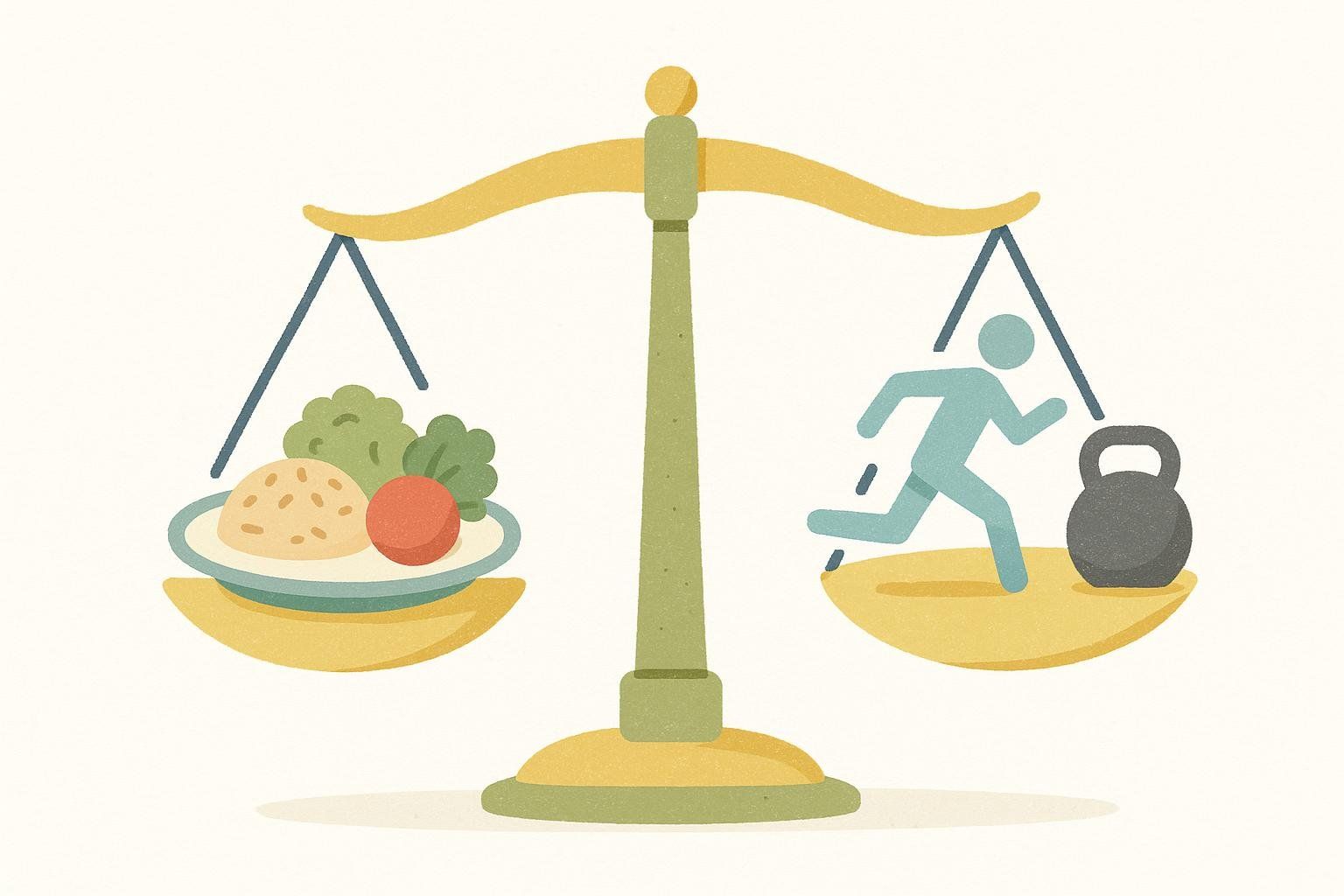
Calculate your daily needs:
- Start with your baseline metabolic rate (BMR/RMR) using an online calculator based on a well-regarded formula like the Mifflin-St Jeor equation. For the most precise measurement, clinical tests like a Resting Metabolic Rate (RMR) analysis are the gold standard.
- Add calories burned through exercise and daily activities to find your Total Daily Energy Expenditure (TDEE)
- Create a deficit of 300-500 calories per day from your TDEE for sustainable fat loss
- Track your intake using apps like MyFitnessPal or Cronometer
Nutrition: Fueling Your Body for Fat Loss
Foods to Support Fat Loss
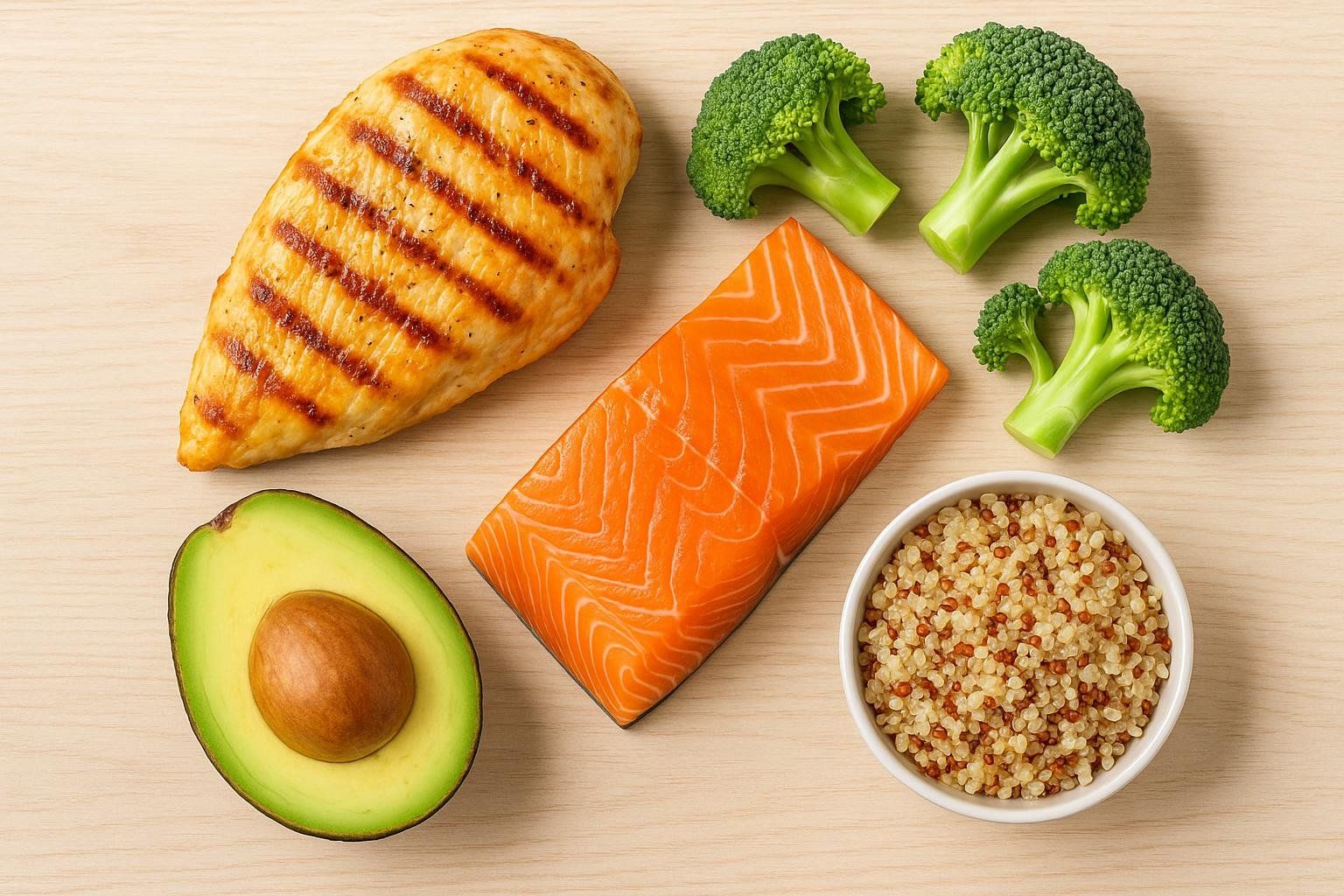
Lean proteins
The International Society of Sports Nutrition recommends 1.4-2.0g per kg body weight daily for physically active individuals (approximately 0.6-0.9g per lb):
- Chicken breast, turkey, fish, lean beef
- Greek yogurt, cottage cheese, eggs
- Plant-based: tofu, tempeh, legumes, protein powder
Complex carbohydrates
Time their consumption around workouts to fuel performance and support recovery:
- Oats, quinoa, brown rice, sweet potatoes
- Fruits: berries, apples, citrus (high in fiber)
- Vegetables: leafy greens, broccoli, peppers
Healthy fats
Include 20-30% of total calories from these sources:
- Avocados, nuts, seeds, olive oil
- Fatty fish: salmon, mackerel, sardines
- Avocado oil for high-temperature cooking
Foods to Minimize
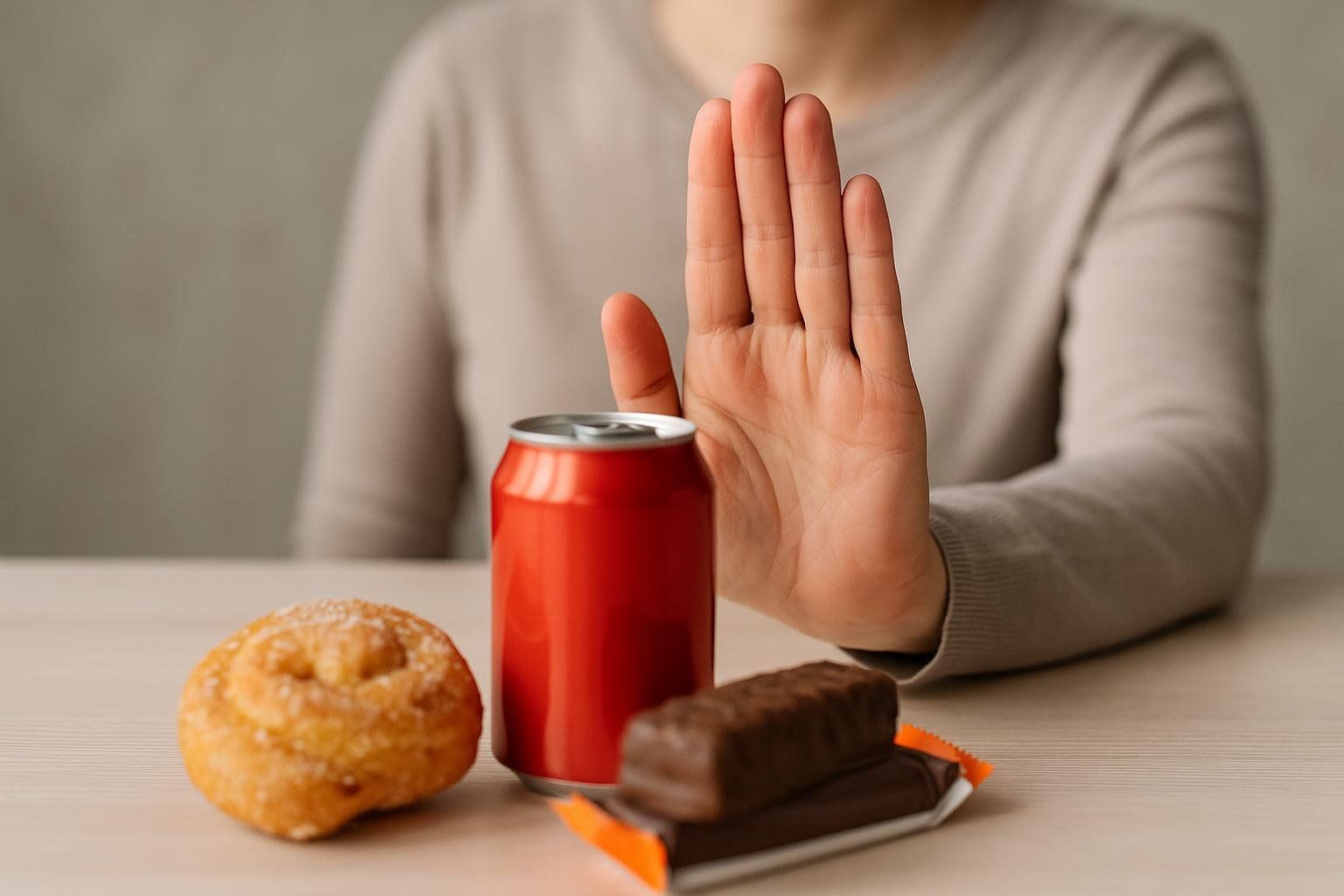
Limiting certain foods can significantly improve your fat loss efforts by helping you maintain your caloric deficit more easily and supporting stable energy levels.
- White bread, pastries, sugary cereals
- Candy, soft drinks, fruit juices
- Packaged snacks with trans fats
These foods are typically high in calories but low in fiber and nutrients, providing poor satiety. This makes it easy to exceed your daily calorie target without feeling satisfied.
Exercise: The Most Effective Chest Fat-Burning Workouts
Cardiovascular Training for Maximum Fat Burn
Athlean-X recommends combining high-intensity interval training (HIIT) and steady-state cardio to accelerate overall fat loss from all areas of the body, which includes the chest and midsection.
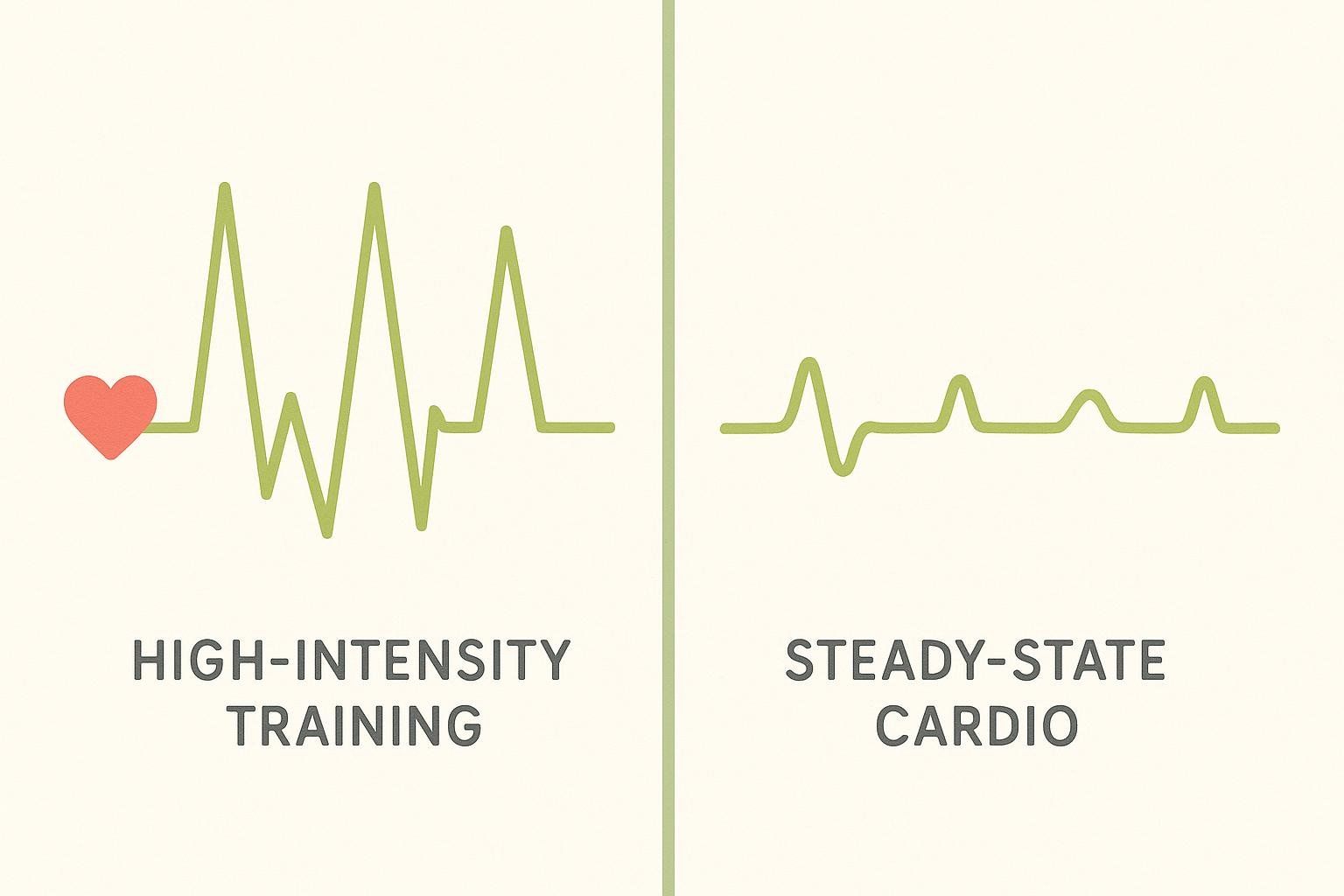
Recommended cardio frequency: 3-5 total sessions per week (mix of HIIT and steady-state)
HIIT Protocol (2-3x per week):
- 5-minute warm-up
- 30 seconds all-out effort, 90 seconds recovery
- Repeat for 8-12 rounds
- 5-minute cool-down
Best HIIT exercises:
- Sprint intervals (treadmill or outdoor)
- Rowing machine intervals
- Bike sprints
- Jump rope circuits
Steady-state cardio (2-3x per week, 20-40 minutes):
- Brisk walking or jogging
- Swimming
- Cycling
- Elliptical machine
Strength Training: Building Muscle to Burn More Fat
While you can't spot-reduce fat from your chest, building pectoral muscle creates a more defined appearance and increases your overall metabolic rate.
Essential Chest Exercises:
Push-up variations:
- Standard push-ups: 3 sets of 8-15 reps. This classic move builds the entire pectoral region.
- Decline push-ups (feet elevated): 3 sets of 6-12 reps. This variation emphasizes the upper chest and shoulders.
- Diamond push-ups: 3 sets of 5-10 reps. This move emphasizes the inner chest and triceps.
Dumbbell exercises:
- Dumbbell bench press: 3 sets of 8-12 reps. This exercise provides overall chest development.
- Dumbbell flyes: 3 sets of 10-15 reps. This movement builds chest width and definition.
- Incline dumbbell press: 3 sets of 8-12 reps. This exercise targets the upper chest.
Advanced equipment moves:
- Cable crossovers: 3 sets of 12-15 reps
- Chest dips: 3 sets of 6-12 reps
- Machine chest press: 3 sets of 10-12 reps
Full-Body Strength Training
Don't neglect other muscle groups. Compound movements that work multiple muscles burn more calories and boost metabolism:
- Squats and deadlifts
- Pull-ups and rows
- Overhead presses
- Planks and core work
Specialized Strategies by Experience Level
For Beginners: At-Home Equipment-Free Start
If you're just starting or need to work out privately at home, focus on bodyweight movements that require zero equipment. Master one movement before progressing to the next:
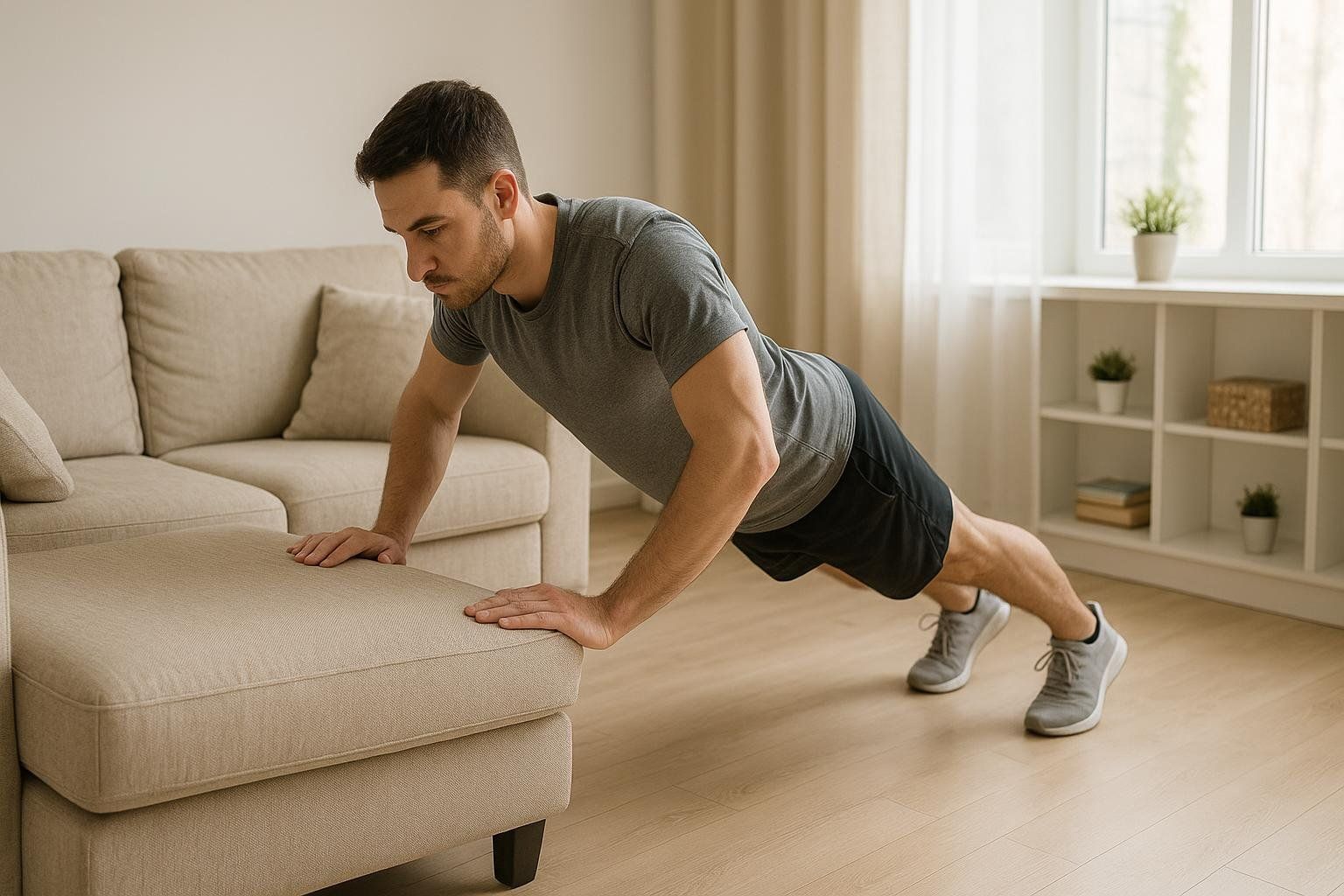
Progressive push-up variations (aim for 3 sessions per week):
-
Wall push-ups: Stand arm's length from a wall and perform push-ups against it. Start with 2 sets of 10-15 reps. This is the easiest starting point.
-
Incline push-ups: Place your hands on a couch or sturdy chair. This emphasizes the lower chest and is a great progression. Work up to 2 sets of 8-12 reps.
-
Knee push-ups: Push-ups from your knees rather than toes. Build to 2 sets of 5-10 reps before moving to full push-ups.
-
Standard push-ups: The full movement. This classic move builds the entire pectoral region.
Progression plan:
- Week 1-2: Wall Push-ups
- Week 3-4: Incline Push-ups
- Week 5-6: Knee Push-ups
- Week 7-8: Standard Push-ups
For Intermediate: Breaking Through Plateaus
If you've been exercising regularly but aren't seeing chest fat reduction:
Advanced techniques:
- Progressive overload: Increase weight, reps, or sets weekly
- Tempo manipulation: Slow the lowering phase (eccentric) of each rep
- Pre-exhaustion: Isolation exercises before compounds
- Drop sets: Reduce weight and continue to failure
Sample intermediate workout (rest 60-90 seconds between sets):
- Dumbbell bench press: 4 sets of 6-8 reps
- Incline dumbbell flyes: 3 sets of 10-12 reps
- Decline push-ups: 3 sets to failure
- Cable crossovers: 3 sets of 15 reps + drop set
For Advanced: Fine-Tuning Body Composition
Experienced lifters dealing with stubborn chest fat need precision:
Periodization approach:
- 4 weeks focused on strength (3-6 rep range)
- 4 weeks on hypertrophy (6-12 rep range)
- 2 weeks on muscular endurance (12+ reps)
Advanced nutrition timing:
Research indicates that consuming protein and carbohydrates around workouts helps support lean muscle maintenance during fat loss phases.
Sample advanced workout (rest 2-3 minutes between sets):
- Barbell bench press: 5 sets of 3-5 reps at 85-90% 1RM
- Weighted dips: 4 sets of 5-8 reps (added weight)
- Incline dumbbell press: 4 sets of 6-8 reps
- Cable flyes (low to high): 3 sets of 6-8 reps
- Push-up to T: 3 sets of 6-8 reps each side. This move enhances core stability and builds rotational strength while working the chest.
Tracking metrics beyond the scale:
- Body fat percentage via DEXA scan
- Progress photos in identical lighting
- Chest, waist, and arm circumference measurements
Lifestyle Factors That Impact Chest Fat
Sleep: The Underestimated Fat Loss Tool
Research shows that poor sleep is linked to lower testosterone and higher cortisol, a hormonal state that promotes overall fat storage, which can include areas like the chest.

Sleep optimization checklist:
- Aim for 7-9 hours per night
- Keep bedroom temperature cool (65-68°F)
- Avoid screens 1 hour before bed
- Maintain consistent sleep/wake times
- Consider blackout curtains or eye masks
Stress Management
Chronic stress elevates cortisol levels, which can contribute to fat storage, particularly in the midsection and chest. Research indicates that methods to regulate stress hormones through meditation, yoga, or regular exercise can help normalize these levels.
Stress-reduction strategies:
- 10-15 minutes of daily meditation
- Regular yoga or stretching sessions
- Adequate social connections and downtime
- Professional support if stress feels unmanageable
Alcohol and Chest Fat
Excessive alcohol consumption can significantly impact chest fat through multiple mechanisms:
- Provides empty calories (7 calories per gram)
- Disrupts sleep quality and recovery
- Lowers testosterone levels
- Interferes with fat metabolism and can promote fat accumulation in the liver and other areas
Practical guidelines:
- Limit to 1-2 drinks per week if fat loss is the priority
- Choose lower-calorie options when you do drink
- Never drink on an empty stomach
- Follow each alcoholic drink with water
Medical and Advanced Solutions
When Natural Methods Aren't Enough
If you've consistently followed a comprehensive approach for 6-12 months without satisfactory results, consider these options:
Hormonal Assessment
A healthcare provider can test for:
- Total and free testosterone levels
- Estrogen levels
- Thyroid function (TSH, T3, T4)
- Insulin sensitivity markers
Medical Treatment Options
For diagnosed hormonal issues, a physician may discuss options like Testosterone Replacement Therapy (TRT) for clinically low testosterone or specific medications for thyroid management. These treatments are prescribed and monitored by a healthcare professional.
Surgical Options
Liposuction: Effective for pseudogynecomastia (chest fat) but not true gynecomastia involving glandular tissue.
Gynecomastia surgery: The American Society of Plastic Surgeons describes this procedure as surgical correction that reduces breast size and enhances chest contours in men, removing both fat and glandular tissue through direct excision.
Tracking Your Progress: Metrics That Matter
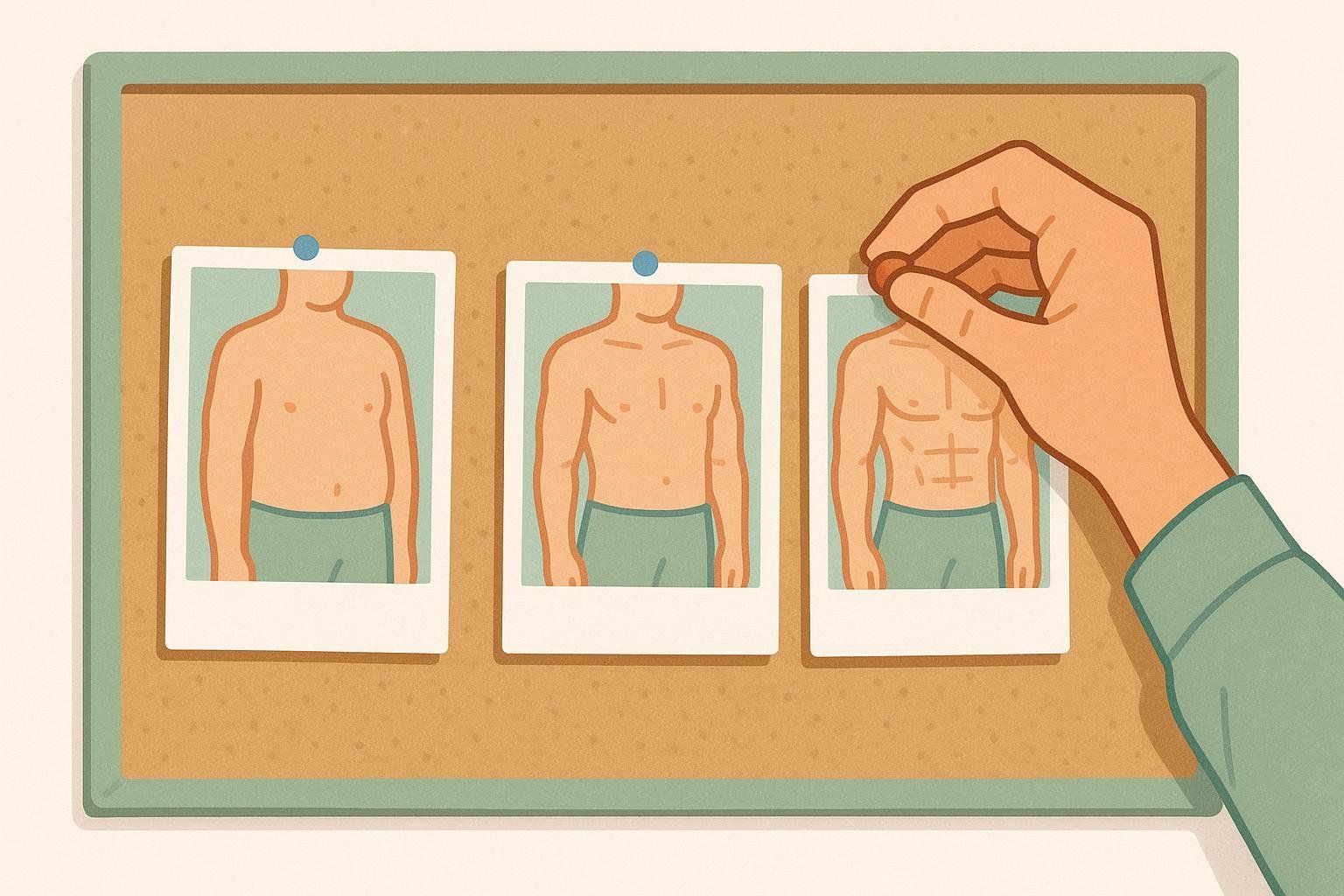
Beyond the Scale
Weight alone doesn't tell the complete story. Use these measurements:
Body composition:
- DEXA scans every 3 months for precise fat/muscle distribution
- Body fat percentage via calipers monthly (less accurate than DEXA but accessible; consistency in measurement technique is key)
- Chest, waist, and hip circumferences monthly
Visual documentation:
- Progress photos in identical lighting and poses
- Focus on consistent timing (same time of day, similar clothing)
- Take front, side, and back angles
Performance metrics:
- Strength progression in key exercises
- Cardiovascular endurance improvements
- Energy levels and sleep quality
Setting Realistic Timelines
While results vary, here's a realistic timeline for what to expect:
- First noticeable changes: 4-6 weeks with consistent effort
- Significant visible improvement: 8-12 weeks
- Dramatic transformation: 6-12 months depending on starting point
You may feel changes in energy levels and clothing fit before seeing dramatic visual changes in the mirror.
Using DEXA Scans for Accurate Measurements
A DEXA scan provides the most accurate measurement of:
- Total body fat percentage
- Regional fat distribution (including chest area)
- Visceral fat levels
- Lean muscle mass
- Bone density
This data helps you:
- Distinguish between fat loss and muscle loss
- Identify if you're losing fat from the chest area specifically
- Monitor visceral fat, which impacts hormone levels
- Adjust your approach based on precise data rather than guesswork
Understanding Your Numbers
According to Healthline's review of American Council on Exercise data, healthy body fat ranges for men are:
- 20-29 years: 12-16% (healthy), 17-23% (average)
- 30-39 years: 13-17% (healthy), 18-24% (average)
- 40-49 years: 14-18% (healthy), 19-25% (average)
For a visual breakdown and deeper dive into what these numbers mean, explore our complete body fat percentage chart for men.
Visceral Fat and Chest Fat Connection
Elevated visceral fat often correlates with chest fat accumulation because both are influenced by:
- Insulin resistance
- Hormonal imbalances
- Inflammatory markers
- Poor sleep and high stress
Research shows visceral fat often decreases first across different weight loss strategies. While your body may burn deeper visceral fat first, consistent effort will also reduce the subcutaneous fat on your chest that you can see and pinch.
Monitoring visceral fat levels through DEXA scans helps you understand the bigger picture of your body composition changes. Learn more about the differences between visceral and subcutaneous fat.
Common Mistakes That Sabotage Results
Spot Reduction Myths
You cannot target fat loss from specific areas through exercise alone. Doing endless push-ups won't preferentially burn chest fat – you must create an overall caloric deficit.
Extreme Approaches
Crash dieting: Often causes muscle loss, which slows your metabolism and makes long-term weight management more difficult
Overtraining: Can increase cortisol and impair fat loss
Eliminating entire food groups: Usually unsustainable and can lead to nutritional deficiencies
Inconsistent Tracking
Common tracking errors:
- Weighing yourself at different times of day
- Not accounting for water weight fluctuations
- Focusing only on scale weight rather than body composition
- Taking progress photos in varying lighting conditions
FAQ: Your Biggest Questions Answered
How long does it take to lose chest fat?
Most men see noticeable changes within 8-12 weeks of consistent diet and exercise. However, the timeline varies based on starting body fat percentage, genetics, and adherence to the program.
Can you lose chest fat without losing weight overall?
Yes, through a process called body recomposition – losing fat while gaining muscle simultaneously. This is especially achievable for those newer to strength training. Body recomposition requires consistent strength training, adequate protein intake, and careful nutrition timing. Your scale weight might stay the same or even increase slightly as you build dense muscle. However, you'll look leaner and your clothes will fit differently because muscle is denser than fat.
Do push-ups reduce chest fat?
Push-ups build chest muscle and burn calories, but they don't specifically target chest fat. Fat loss occurs systematically through creating a caloric deficit.
Is chest fat genetic?
Genetics influence where your body stores and loses fat first. Some men naturally carry more fat in the chest area, but this can still be reduced through proper diet and exercise.
Can supplements help with chest fat loss?
No supplement specifically targets chest fat. Focus on proven basics: protein powder for convenience, creatine for strength training performance, and a multivitamin if your diet has gaps.
Should I do cardio or weights first?
For fat loss, an effective strategy is to perform strength training first when your energy levels are highest, followed by cardio. This approach helps preserve muscle mass while maximizing calorie burn.
Your Next Steps: Creating Your Action Plan
-
Assessment (Week 1):
- Determine if you have chest fat or gynecomastia using the checklist above
- Baseline measurements: weight, body fat percentage, chest circumference
- Consider a DEXA scan for precise starting data
-
Nutrition Setup (Week 1-2):
- Calculate your caloric needs and create a 300-500 calorie deficit
- Plan meals around lean protein, complex carbs, and healthy fats
- Begin tracking intake with an app
-
Exercise Implementation (Week 2-4):
- Start with 3 days of strength training, 3-5 days of cardio total
- Focus on proper form before increasing intensity
- Progress gradually to avoid injury
-
Lifestyle Optimization (Ongoing):
- Prioritize 7-9 hours of quality sleep
- Implement stress-management techniques
- Limit alcohol consumption
-
Progress Monitoring (Monthly):
- Take progress photos and body measurements
- Reassess and adjust your approach based on results
- Schedule follow-up DEXA scans every 3 months
Remember, sustainable fat loss takes time and consistency. Focus on building habits you can maintain long-term rather than seeking quick fixes. With the right approach, most men can significantly reduce chest fat and achieve the confident, defined chest they desire.
Ready to get precise data on your current body composition? Book a BodySpec DEXA scan to establish your baseline and track your progress with scientific accuracy.
